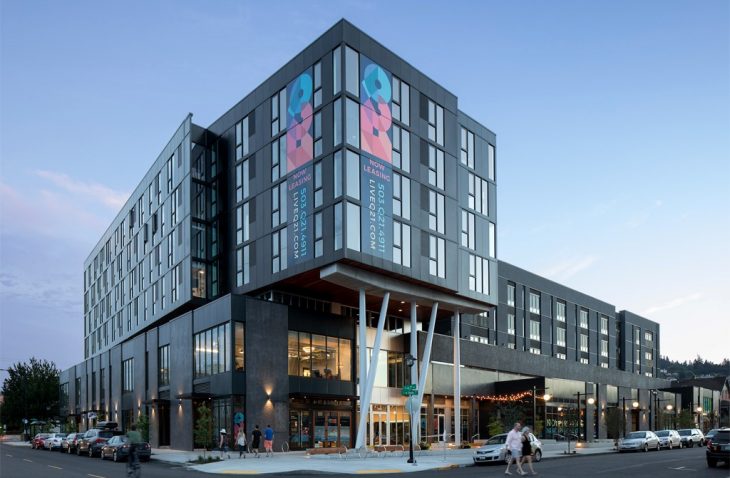Portland Mixed-use Facility

Located adjacent to the Conway District at NW 21st & Quimby in Portland, the seven-story, 202,200-sf mixed-use facility includes 162 living units, a courtyard, offices, parking, and ground-floor retail. The project consists of two wood-framed, three-story residential buildings separated by a courtyard, all of which is situated above a two-level, post-tensioned concrete parking structure that is partially below-grade.
The two buildings are connected to a seven-story, post-tensioned concrete structure that includes residential units at the upper levels, office space, and retail at the ground floor. The concrete structure’s lateral force-resisting system consists of reinforced concrete shear walls and a seismic joint was detailed to separate the wood and concrete buildings where they adjoin.
A one-story retail space extends off the north side of the structure, and eight two-story townhomes occupy the ground level along the building’s south side. The project is highlighted by three-story double-tapered steel columns at the main entrance that form an “XXI” shape to symbolize the project name and street number location. These specialty steel columns were constructed with two tapered dodecagon (12-sided) steel sections welded together at the column midpoint to form a double-tapered member. A tapered cantilevered post-tensioned concrete beam spans the top of the steel columns to support four stories of structure above.
One of the most unique and challenging aspects of the project included preserving and modifying the 35-foot tall existing concrete tilt-up wall panels from the existing warehouse building on the site. The team incorporated the panels into the architectural and structural design as a non-structural exterior wall element to preserve the heritage of one of the early buildings that Andy Andersen, the founder of Andersen Construction, built and to promote the conservation of materials. This effort was significant and meaningful for Andersen Construction now that the family-owned business is being led by its third generation.
The existing concrete wall panels were cut, reinforced with steel backing and fiber reinforcement, and temporarily braced during construction. A few of the panels were lowered and transported to off-site storage to allow for site access. IMEG provided full engineering support for this entire process during the initial phase of construction.
The project received the Structural Engineers Association of Oregon (SEAO) 2017 Excellence in Structural Engineering Award for a new building over $10 million.







